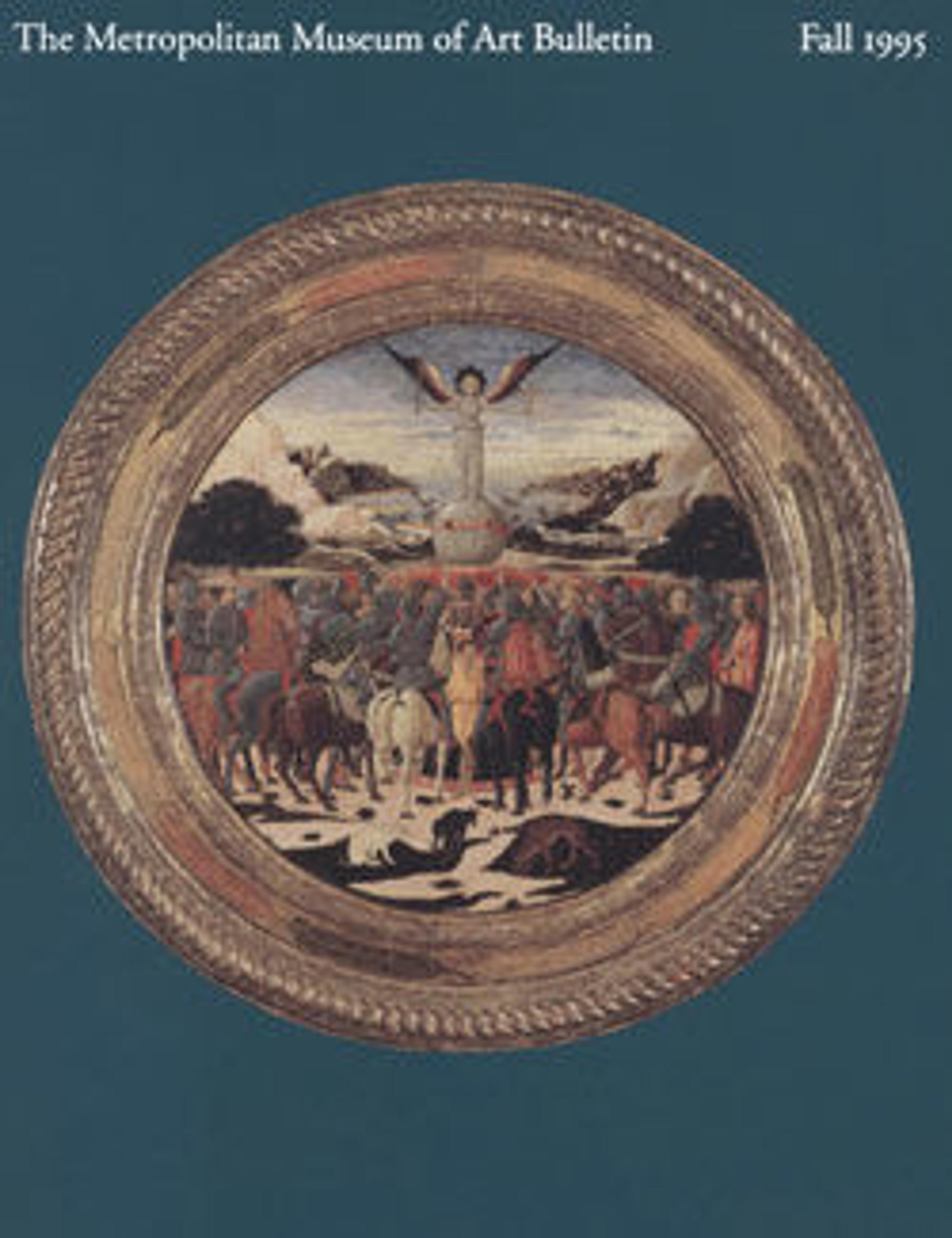Bust-Length Portrait of a Woman (recto); Bust-Length Study of a Girl (verso)
Painter, engraver, and draftsman, Agostino Carracci was active in Bologna, Rome, and Parma and was a founder of the Carracci Academy in Bologna in 1582. Rejecting the extreme artifice of Mannerism, the prevailing style of painting during the late sixteenth century, the Accademia degli Incamminati ("those who are making progress"), as the Carracci Academy soon came to known, championed the study of nature and the primacy of drawing from life as central tenets of a new artistic idiom that derived its expressive capacity and emotional force from an engaging naturalism and verisimilitude.
Agostino's depiction of a partially blind woman (her glazed right eye is unseeing), drawn from life, exemplifies the new naturalism that lay at the heart of the Carracci reform. The unknown sitter is both physically and psychologically present: even with her impaired vision she confronts the viewer with an unwavering gaze. Details such as her slender neck scarf, hoop earrings, and braided coif dressed with bows or flowers (adornments indicating that, unlike Annibale Carracci's portraits of blind subjects, this sitter is not impoverished) are confidently rendered. This powerful, exceptionally lifelike portrait is among Agostino's most important and accomplished red-chalk drawings.
Among the finest of Agostino's drawings, this work is also an outstanding example of Bolognese naturalistic portraiture of the late sixteenth century. Probably dating from the 1590s, during the artist's stay in Rome, the drawing bears a striking resemblance to Agostino's painting of Anna Parolini Guicciardini (Gemäldegalerie, Berlin), which is signed and dated 1598. The Museum's drawing, however, communicates the identity of the sitter with more unsparing veracity and greater psychological immediacy than is found in any of Agostino's late painted portraits of women. Much of its expressive force derives from the woman's intent gaze. Agostino subtly distinguished between her seeing and her blind eye, not only by contrasting the anatomical details but also by changing his handling of the red chalk medium – the tonal scale, the line weight, and the direction of the hatching.
(Carmen C. Bambach, 2008)
Agostino's depiction of a partially blind woman (her glazed right eye is unseeing), drawn from life, exemplifies the new naturalism that lay at the heart of the Carracci reform. The unknown sitter is both physically and psychologically present: even with her impaired vision she confronts the viewer with an unwavering gaze. Details such as her slender neck scarf, hoop earrings, and braided coif dressed with bows or flowers (adornments indicating that, unlike Annibale Carracci's portraits of blind subjects, this sitter is not impoverished) are confidently rendered. This powerful, exceptionally lifelike portrait is among Agostino's most important and accomplished red-chalk drawings.
Among the finest of Agostino's drawings, this work is also an outstanding example of Bolognese naturalistic portraiture of the late sixteenth century. Probably dating from the 1590s, during the artist's stay in Rome, the drawing bears a striking resemblance to Agostino's painting of Anna Parolini Guicciardini (Gemäldegalerie, Berlin), which is signed and dated 1598. The Museum's drawing, however, communicates the identity of the sitter with more unsparing veracity and greater psychological immediacy than is found in any of Agostino's late painted portraits of women. Much of its expressive force derives from the woman's intent gaze. Agostino subtly distinguished between her seeing and her blind eye, not only by contrasting the anatomical details but also by changing his handling of the red chalk medium – the tonal scale, the line weight, and the direction of the hatching.
(Carmen C. Bambach, 2008)
Artwork Details
- Title:Bust-Length Portrait of a Woman (recto); Bust-Length Study of a Girl (verso)
- Artist:Agostino Carracci (Italian, Bologna 1557–1602 Parma)
- Date:1557–1602
- Medium:Red chalk, over possible traces of black chalk (recto); red chalk (verso)
- Dimensions:Sheet: 13 11/16 x 9 13/16 in. (34.8 x 25 cm)
- Classification:Drawings
- Credit Line:Purchase, Lila Acheson Wallace Gift, 1994
- Object Number:1994.143
- Curatorial Department: Drawings and Prints
More Artwork
Research Resources
The Met provides unparalleled resources for research and welcomes an international community of students and scholars. The Met's Open Access API is where creators and researchers can connect to the The Met collection. Open Access data and public domain images are available for unrestricted commercial and noncommercial use without permission or fee.
To request images under copyright and other restrictions, please use this Image Request form.
Feedback
We continue to research and examine historical and cultural context for objects in The Met collection. If you have comments or questions about this object record, please contact us using the form below. The Museum looks forward to receiving your comments.
